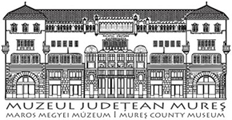Marisia - Maros Megyei Múzeum Évkönyve 29/3. (2009)
Rezi Botond, Nagy József-Gábor: Rescue Excavations at Chinari "Mociar" (Mureş County)
Rescue Excavations at Chinari “Mociar” (Mure? County) 103 The colour of the pottery is influenced by the firing of the clay; generally the outside colour of the pots is brown/brick-reddish, followed by brown/greyish. The firing can be oxidant or reduction, and the majority of the pots have secondary burning on the body, that shows that they were place on open fire. Some of the bowls have oxidant or reduction firing that produces shades of brick-red, brown/brick-reddish, gray, black/greyish or black coloured. The majority of the bowls are bicoloured: brick-red, brown, brown/brick-reddish outside and black, gray, black/greyish inside, there are a few bowls with black/greyish outside and brick-red inside. The greatest number of fragments with reduction and oxidant firing belong to the large bitronconic vessels, which are mostly black outside and brown/brick/reddish inside. The procedure of the firing in two colours appears on twenty-seven pottery fragments48, the majority are black or gray outside and brick-red/ brown inside, nine of them have black colour outside and red inside. For the first time K. Horedt called the attention on the fact that the black and red coloured vessels originate in the Pilinyi culture, which adopted this technique from the southern part of the Alföld, where it appeared in Reinecke Bronze D period49. This technique will widely spread in the Carpathian Basin under the influence of Gáva culture in the Early Iron Age50. Graph V. Distribution of pottery firing. 1. Oxidant; 2. Reduction; 3. Reduction outside and oxidant inside; 4. Oxidant outside and reduction inside; 5. Secondary burning Based on the analysis of the archaeological materials, at the current stage of research, the settlement from Chinari “Mociar” can be dated in the Early Iron Age, Reinecke На A251 and 48 The difference in the inside and outside colour, suggests that the mouth of the pot was closed in some way, perhaps by being fired inverted on the kiln floor or as a part of a stack of vessels. (Orton et alii 1993, 68 sq.) 49 Horedt 1967, 151. 50 László 1973, 599. 51 In the centre of Transylvania H. Ciugudean proposed the term Cugir - Band, the discoveries are parallel with the second phase of the Läpu? necropolis (Ciugudean 1994, 25 sqq; Ciugudean 1994a, 72 sq); C. Kacsó dates the end of Läpu? group at the middle of Ha A phase, which he considers the end of the Late Bronze Age III phase from north-west Romania (Kacsó 1990, 49). See also (Gogältan 2001, 198 sq.; Gogältan 2002, 44 sq.). The end of Bronze Age III phase for the central and south-west areas of Transylvania is linked with the beginning of the Gáva - Holihrady culture in Ha Bi (Vasilievet alii 1991, 105 sqq; Vasiliev 1992, 25).
